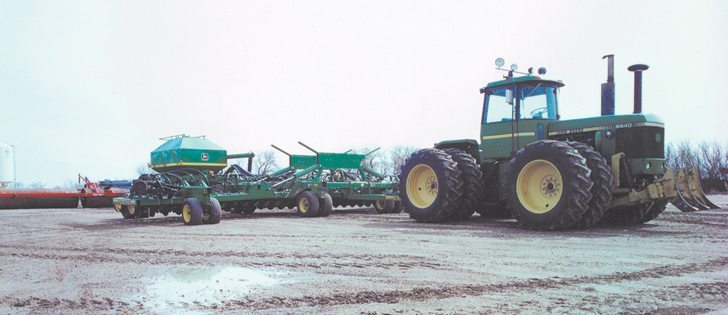Bull or bear | Observers interpret drought, seeding response differently
Are crop markets going another dollar a bushel down, as some analysts say? Or is the next bull market just a few weeks away from occurring?
Analysts say it’s a matter of how psychology and weather combine, and psychology might be the bigger factor.
“There really isn’t much middle ground any more,” said Mike Krueger of the Money Farm in Fargo, North Dakota.
“You’re either all in or all out. It’s $4 corn or it’s $7 corn.”
Varying assessments about the impact of last year’s U.S. Midwest drought and this year’s late seeding are pushing the market in opposite directions.
Read Also

Critical growing season is ahead for soybeans
What the weather turns out to be in the United States is going to have a significant impact on Canadian producers’ prices
Bearish analysts believe the only thing propping up grain prices from falling further is the problem with late seeding in the U.S.
“We see roughly a dollar lower from here,” Rich Nelson of Allendale, Inc. said about the outlook for corn and soybeans. Wheat is fairly priced and should be stable, he believes.
Bearish analysts tend to see December corn futures prices dropping $1 per bushel, with soybeans dropping $1 to $1.50. Some also think wheat will follow corn.
Farmers might see today’s new crop prices as depressed compared to what they saw last summer and fall.
However, recent rain has recharged soil moisture across much of the Midwest and alleviated problems in the Plains states, setting the stage for better production.
The bears say prices would be lower if the crop was being seeded at a normal pace. However, it is well behind ideal seeding progress in most of the Midwest and Plains, although not in the danger zone yet.
That anxiety now supporting prices will evaporate and prices will sell off if farmers seed the crop before critical windows close.
The supply tightness that has supported high crop prices disappears if this year’s crops come in with trend line yields, and the market will start reflecting that reality as the crop matures.
However, bullish analysts such as Krueger think the market has sold off too much and should be near its bottom.
“I don’t think there’s that much downside risk, but (bearishness) is the general attitude of the market,” said Krueger.
“They think the only reason we haven’t crashed further, faster, is that we’re late.”
Krueger said market psychology is overwhelmingly bearish, with many market players assuming last year’s drought damage has been undone and that drought won’t recur.
However, he said snow and spring rain have not been enough to recharge soils in the Midwest, and the western Plains are still dry with little subsoil moisture.
Unless the Plains and Midwest receive steady rain through the season, the dryness lurking in the subsoil will begin to hurt crop yields.
Traders, commercial users and investors might then realize that all the problems of last year have not passed.
However, dry subsoil is not on traders minds now.
“I think the drought talk is out of everybody’s minds until mid-June at least,” said Krueger.
“It’s hard for people to talk about a drought when people are worried about getting a crop planted because it’s raining.”
However, analysts say a wild card will be the role of speculative money from hedge funds and other outside investors. Speculative money tends to flow in and add to the upside momentum as crop prices increase. As crop prices fall, the speculative money tends to clear out and increase the downward momentum.
The funds now have a smaller position than during the rally, after months of selling off. Analysts say that the big speculative funds could have a big impact on what happens once seeding is complete.
The question is, will it come back in and buy crop futures or continue to sit on the sidelines.


















